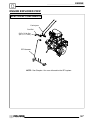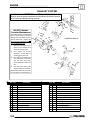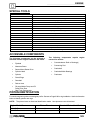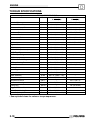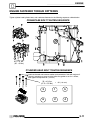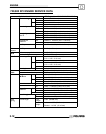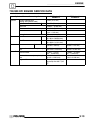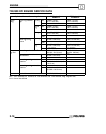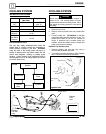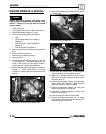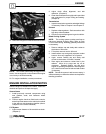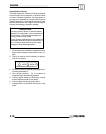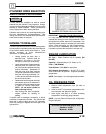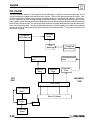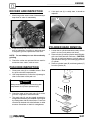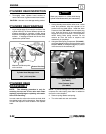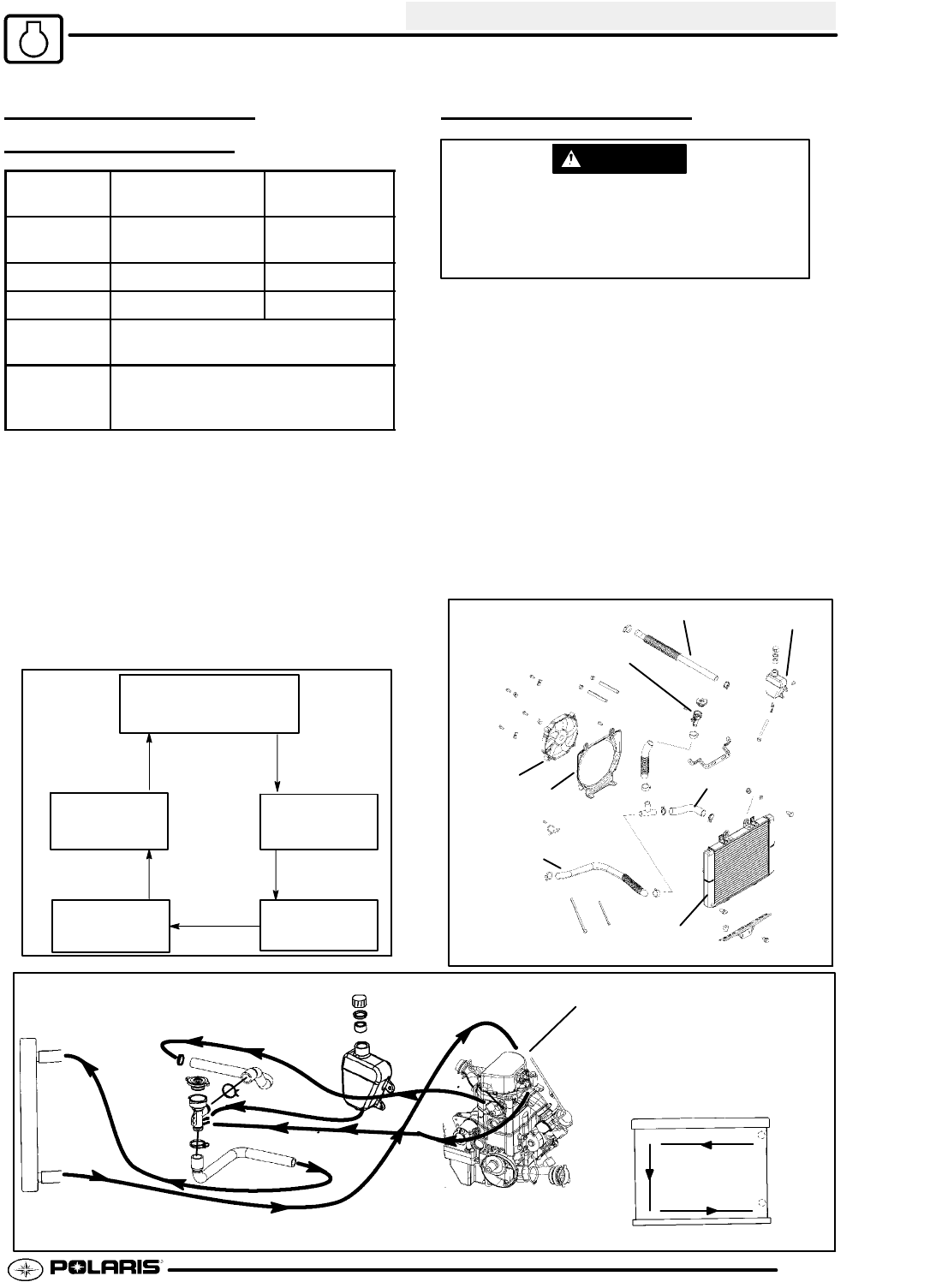
Radiator
Left Side
View
Radiator
Front
View
Top
Bottom
To Wat er P um p
Coolant Flow Diagram
ENGINE
3.15
COOLING SYSTEM
SPECIFICA
TIONS
Condition Approx. Reading
(Min--Max)
Temperature
Hot Light
On
178Ω -- 190Ω 215° F
(102° C)
Fan Off 296Ω -- 316Ω 180° F(82° C)
Fan On 236Ω -- 251Ω 195° F(91° C)
System
Capacity
2.25 Quarts
(2.13L)
Radiator
Cap Relief
Pressure
13 PSI
Recommended Coolant
Use only high quality antifreeze/coolant mixed with
distilled water in a 50/50 or 60/40 ratio, depending on
freeze protection required in your area. CAUTION:
Using tap water in the cooling system will lead to a
buildup of deposits which may restrict coolant flow and
reduce heat dissipation, resulting in possible engine
damage. Polaris Premium 60/40 Antifreeze/Coolant is
recommended for use in all cooling systems and comes
pre-mixed, ready to use.
Radiator
Thermostat
Cylinder
Head
Water
Pump
Cylinder
FLOW
COOLING SYSTEM
WARNING
Never remove radiator cap when engine is
warm or hot. The cooling system is under
pressure and serious burns may result. Allow
the engine and cooling system to cool before
servicing.
1. Remove front cover.
2. Remove recovery bottle hose from coolant filler
neck.
3. Connect a Mity Vact (PN 2870975) to the filler
neck nipple and pressurize system to 10 psi. The
system must retain 10 psi for five minutes or
longer. If pressure loss is evident within five
minutes, check the radiator, hoses, clamps and
water pump seals for leakage.
Radiator Cap Pressure Test
1. Remove radiator cap and test cap using a
commercially available cap tester.
2. The radiator cap relief pressure is 13 lbs. Replace
cap if it does not meet this specification.
Radiator
Shroud
Fan
Lower Engine
Hose
Hose
Upper Engine Hose
Surge Tank
Filler Neck Assy.
Exploded View



